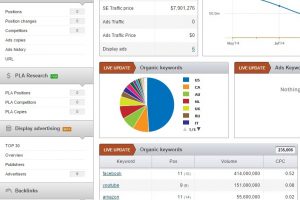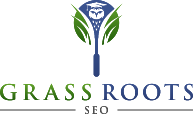4 Ways To Forecast Your SEO Investment
4 Ways To Forecast Your SEO Investment For Business
Internet search engine optimization is one of many digital online advertising approaches a business can choose to concentrate on. Email, ppc, display and affiliate internet marketing are all in many companies advertising approaches, and while the cost per visitor for natural search is zero, in order for you to achieve success within the SERPs, grassroots SEO investment is required. You can forecast SEO impact on your business with a few simple steps.
Black Hat SEO strategies like purchasing links, keyword stuffing and cloaking used to work for all those seeking to get visibility within the search results page. Artificial Intelligence and machine learning like Google’s RankBrain, have caught many of these bad tactics, and now a more human way to on-page optimization, content advertising and connection is required to rank for extremely popular search terms. Consequently, in order to get investment and buy-in for search engine optimization it’s not surprising that marketing leaders demand a sound SEO forecast on how search engine optimization will be pursued.
How to forecast the size of the SEO prize?
Before you can start constructing the tactics for search engine optimization, you should identify the opportunity for organic performance. To do so, carry out an audit of your web site and use your web analytics to comprehend what natural search is presently contributing to the domain. By understanding how much value search engine optimization now contributes with respect to visits, conversions, leads and revenue, you may start to understand where you now are and where improvements can be made.
Building the forcast for search engine optimization investment
 Once you’ve completed an audit and so produced a baseline to measure against, you can start putting together a case, with numbers, to exemplify improvements to natural search by using Search engine optimization may affect the company.
Once you’ve completed an audit and so produced a baseline to measure against, you can start putting together a case, with numbers, to exemplify improvements to natural search by using Search engine optimization may affect the company.
There are 4 ways to forecast your SEO investment:
1. Concentrate on Google – for the time being
According to any and all industry metrics, Google remains the largest portal for internet searches. Google supplies more organic web searches then the next two search engines combined . While it is important not to become too myopic and build your site around only one internet search engine, it is wise to recognize Google as the current market leader in the search area. Start with the biggest opportunity for SEO improvement.
2. Estimate potential search quantity for top terms
Assuming you’ve already conducted a gap analysis that is keyword to identify the terms most applicable to your site, the next issue is to estimate the prospective search volume to the top search terms you want to optimize for using Google’s Keyword Tool or similar keyword research tool. Take every one of the primary important phrases and drop it into the tool. The output from this activity will give you an indication as to the number of searches especially for those phrases each month.
3. Estimate Google Click-through rate percent
You’ll be competing for only a share of the number of searches from the Google Keyword Tool activity we looked at above. So the next task is to determine what percentage of those monthly searches you have the potential to get to your web site.
A great way to do that is to calculate the click-through speed from natural listings on page 1 of Google. An Optify study showed a position 1 ranking attained 36.4% click-through rate, over a 2.4% higher CTR than position two. At the mean time, SEOMoz released research showing average click-through rate percentages for brand, product and general searches, indicating that web sites ranking in position 1 had a 52% CTR.
Additionally, iThinkMedia, provided statistics based on research they conducted having a vast assortment of clients, which suggests comparable results to the studies above with the exception of position 1 rankings. The 18.2% click-through speed for position 1 is definitely more conservative than SEOMoz’s 52% and Optify’s 36.4% but that’s not a bad thing as it’s better to under promise and over deliver when making predictions like these. And definitely there are numerous other reasons to be aware of for example, this strategy fails to contemplate the impact of universal search, local search, mobile search, search intent or the result of rich snippets on CTR. Nonetheless, the concept of potential Click-through speed based on where you rank on page 1 of Google and is a fantastic place to start for anybody considering the effect of rankings on visitors to their web site.
4. Forecast possible traffic and sales from SEO
The final step is to put the data together in a format in which one can show what visitors can be obtained from appearing 1-10 on Google and how this translates to visitors and sales. This last piece in the puzzle is to calculate every primary phrase converts. This is something which may be done when carrying out an audit of your website’s current SEO performance. Working out the speed of conversion of particular sets of phrases will enable you to determine the potential traffic and earnings return by ranking in positions 1-10 for the maximum volume search terms.
Finally, once you know the speed of conversion, you can forecast SEO results when you multiply your ordinary lead or order value to give you a rough indication of how sales may be impacted by improved natural search traffic to your top key generic search phrases.

A seasoned digital marketing professional with over 20 years of expertise in digital marketing, search engine optimization, search engine marketing, brand development, conversion optimization, lead generation, web development and data analytics. He is a strategic digital marketing thought leader in a multitude of business verticals including automotive, education, financial services, legal marketing and professional services.



